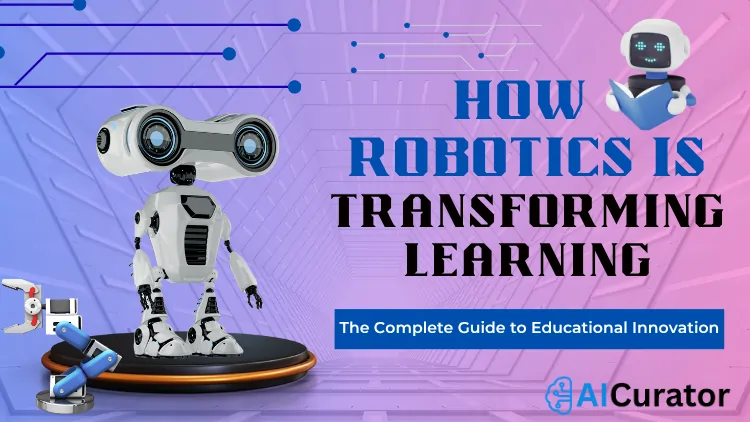Schools are tapping into Robotics in education to assign homework, coach math drills, and moderate group tasks. From STEM robotics labs to AI-powered pods, machine-led lessons are here. AI tutors answer every question, while compact robots deliver custom feedback—boosting scores by two grade levels.
The educational robotics market has exploded to USD 1.4 billion in 2023 and is projected to reach USD 5.8 billion by 2030. More importantly, over 60% of educational institutions now report increased use of digital robotics tools, driving a 20% surge in educational resource adoption globally.
Why Robotics in Education Matters More Than Ever
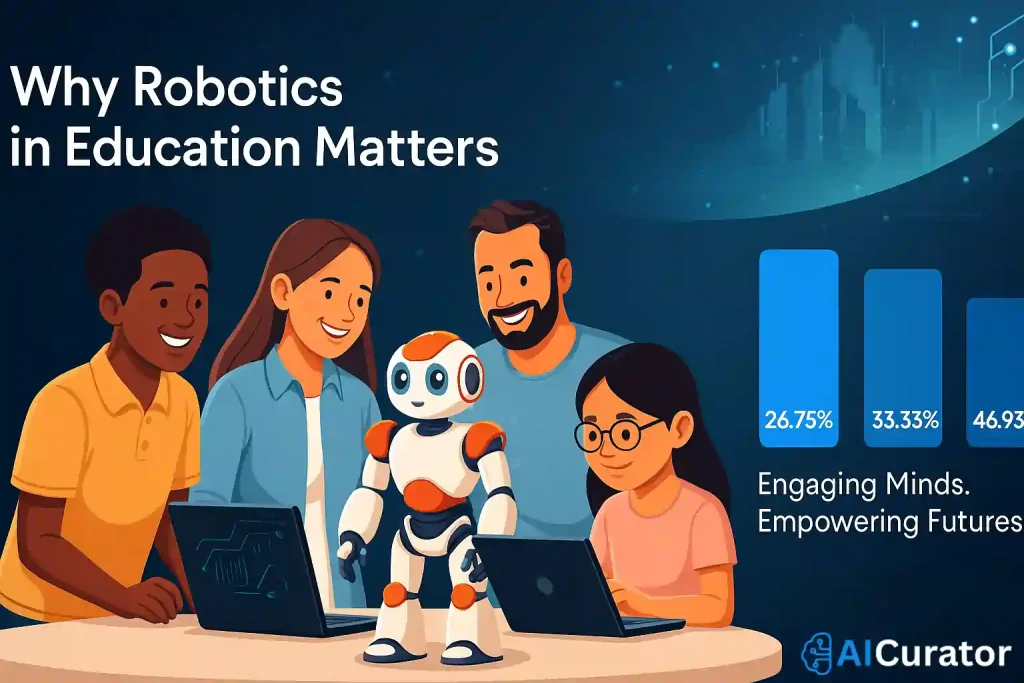
Traditional teaching methods often struggle to capture students' attention in our digital age. By 2030, more than 80% of jobs will require STEM skills, making early exposure to robotics and programming essential for career readiness.
Current statistics reveal fascinating adoption patterns:
The Engagement Revolution
Students who learn through robotics show remarkable improvements in attention and retention. Instead of memorising abstract concepts, they build, program, and test real solutions. This hands-on approach makes complex subjects like mathematics, physics, and computer science more accessible and enjoyable.
Core Benefits of Educational Robotics
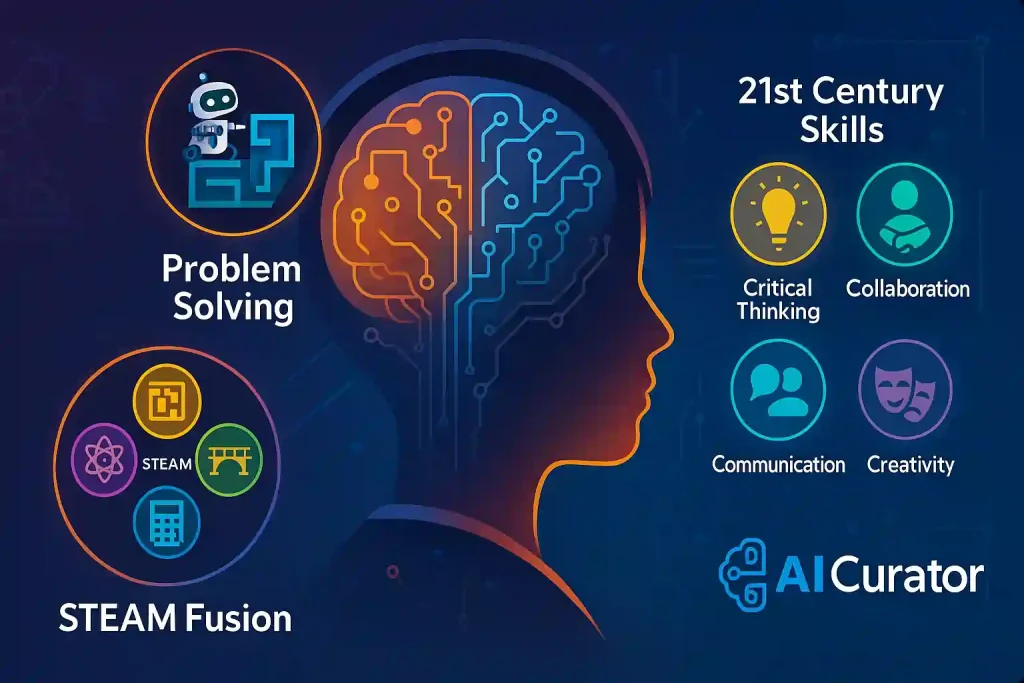
Enhanced Problem-Solving Skills
Robotics challenges students to break down complex problems into manageable steps. When programming a robot to navigate a maze or sort objects by colour, students develop algorithmic thinking and logical reasoning.
STEAM Integration Excellence
Educational robots seamlessly blend:
21st Century Skills Development
Modern robotics education builds essential skills including:
Latest Robotics Trends Transforming Classrooms in 2025
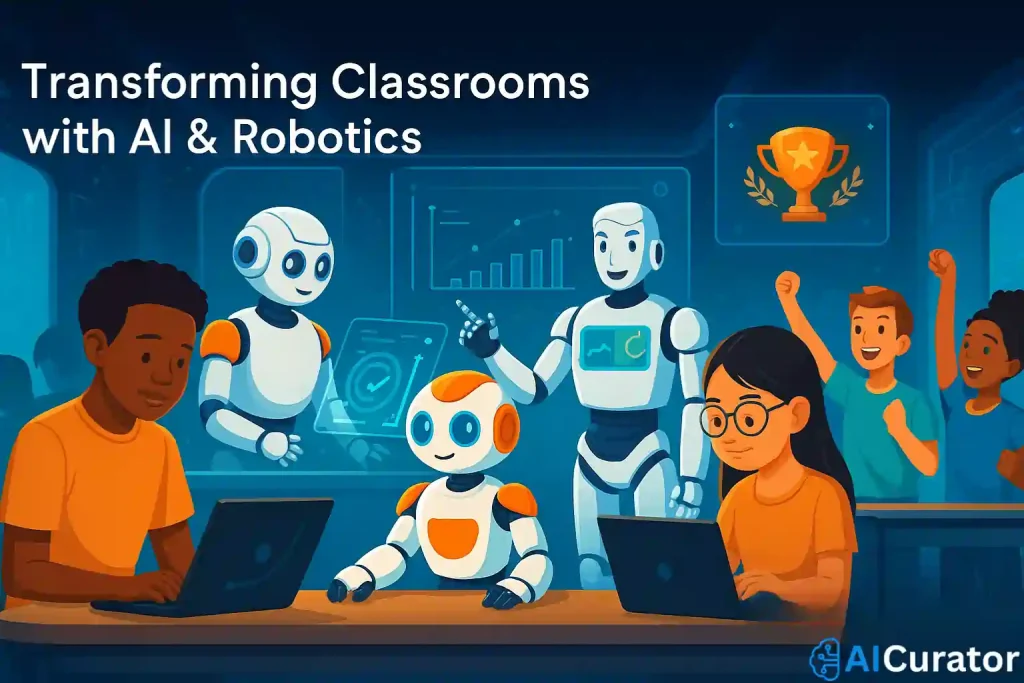
AI-Powered Learning Companions
Advanced robots now use artificial intelligence to adapt teaching methods to individual student needs. These intelligent systems can identify learning gaps and adjust difficulty levels in real-time.
Personalised Learning Pathways
Modern educational robots create customised curricula by analysing individual student performance data. This personalisation ensures no student falls behind whilst challenging advanced learners appropriately.
Gamification and Interactive Learning
Robotics platforms now incorporate game-like elements that increase motivation and engagement. Students earn points, unlock achievements, and compete in challenges whilst mastering programming concepts.
Real-World Applications Across Age Groups
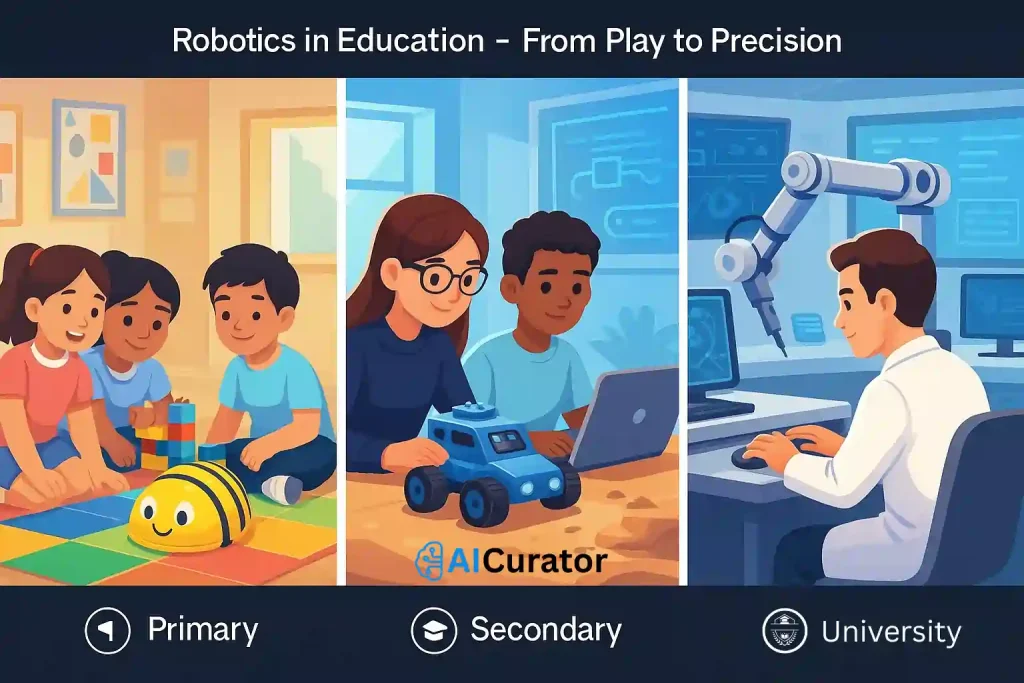
Primary Education (Ages 5-11)
Young learners use simple robot kits like Bee-Bot and LEGO WeDo to understand basic programming concepts. Primary school teachers in grades 1-4 show a 29.82% adoption rate for educational robotics.
Key benefits include:
Secondary Education (Ages 12-18)
Advanced platforms like LEGO Mindstorms and VEX Robotics introduce complex programming and engineering concepts. Students tackle real-world challenges like environmental monitoring and automated systems.
Higher Education
Universities integrate robotics across multiple disciplines, from medical training with surgical robots to business studies exploring automation impacts.
Market Statistics and Growth Projections
| Metric | 2023 Value | 2030 Projection | Growth Rate |
|---|---|---|---|
| Market Size | USD 1.4 billion | USD 5.8 billion | 324% increase |
| Institutional Adoption | 60% | 85%+ | 25%+ growth |
| Resource Usage | 20% increase | 40%+ increase | Doubling |
The humanoid robot segment within educational robotics is expected to double its revenue by 2028, indicating growing sophistication in educational applications.
Addressing Common Implementation Challenges
Cost Considerations
Educational robot kits now come in various price ranges, making adoption more accessible. Many schools start with basic programmable toys before investing in advanced platforms.
Teacher Training Requirements
Successful robotics programmes require proper educator preparation. Romania's ambitious pilot programme trained 1,600 teachers to engage 50,000 students, achieving remarkable results through adaptive learning platforms.
Technical Support Needs
Schools benefit from partnerships with technology companies and community organisations to provide ongoing technical assistance and curriculum development.
Future Career Preparation
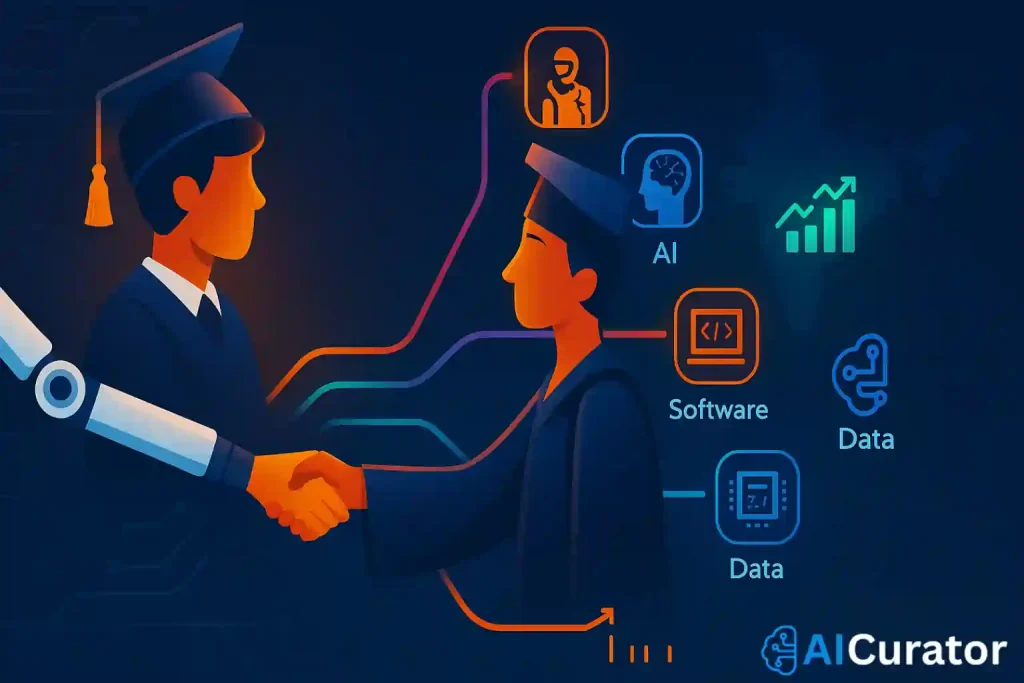
Industry Alignment
Robotics education directly prepares students for careers in:
Global Competitiveness
Countries investing heavily in robotics education gain competitive advantages. India allocated INR 93,848 crore (approximately USD 13.15 billion) to education sector funding, with significant portions supporting technology-related studies.
Success Stories and Best Practices
Georgia Institute of Technology Case Study
The university deployed “Ms. Watson,” an IBM Watson-powered chatbot that handled 10,000 student messages per semester with a 97% success rate. Students initially didn't realise they were interacting with AI rather than human teaching assistants.
Romania's National Programme
Starting with 3,000 participants in 2019, Romania's robotics competition grew to 44,500 participants by 2021. This dramatic increase demonstrates student enthusiasm and programme effectiveness.
Implementation Strategies for Educators
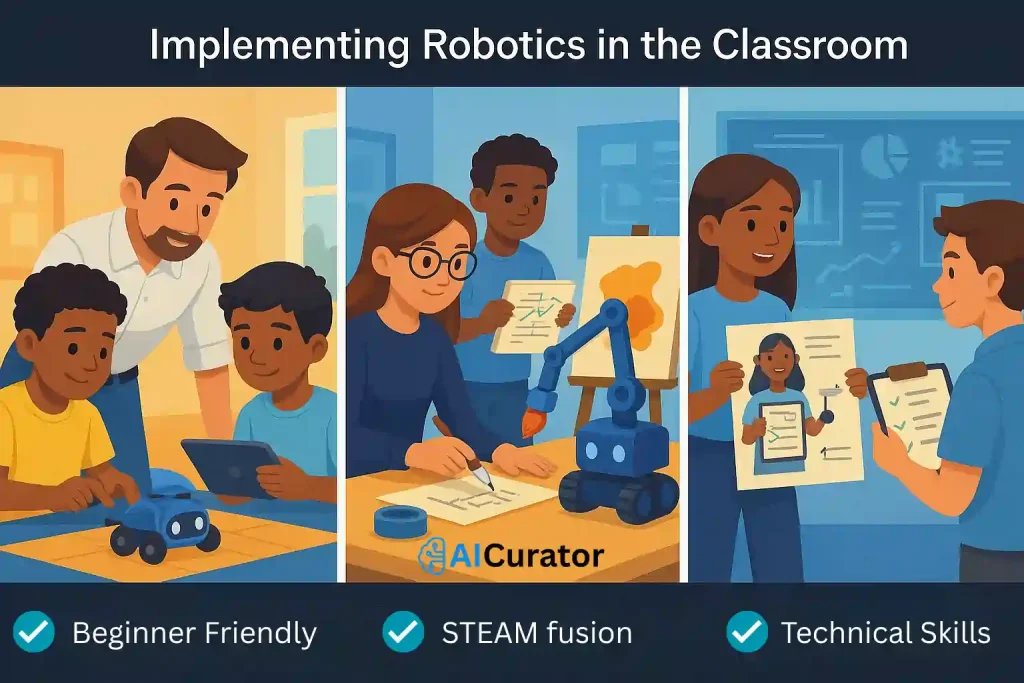
Starting Small
Begin with simple programmable robots and gradually introduce more complex systems as students develop confidence and skills.
Cross-Curricular Integration
Connect robotics projects to multiple subjects simultaneously. For example, programming robots to create art pieces combines technology, mathematics, and creative expression.
Assessment Methods
Evaluate student progress through:
Looking Ahead: The Future of Robotics in Education
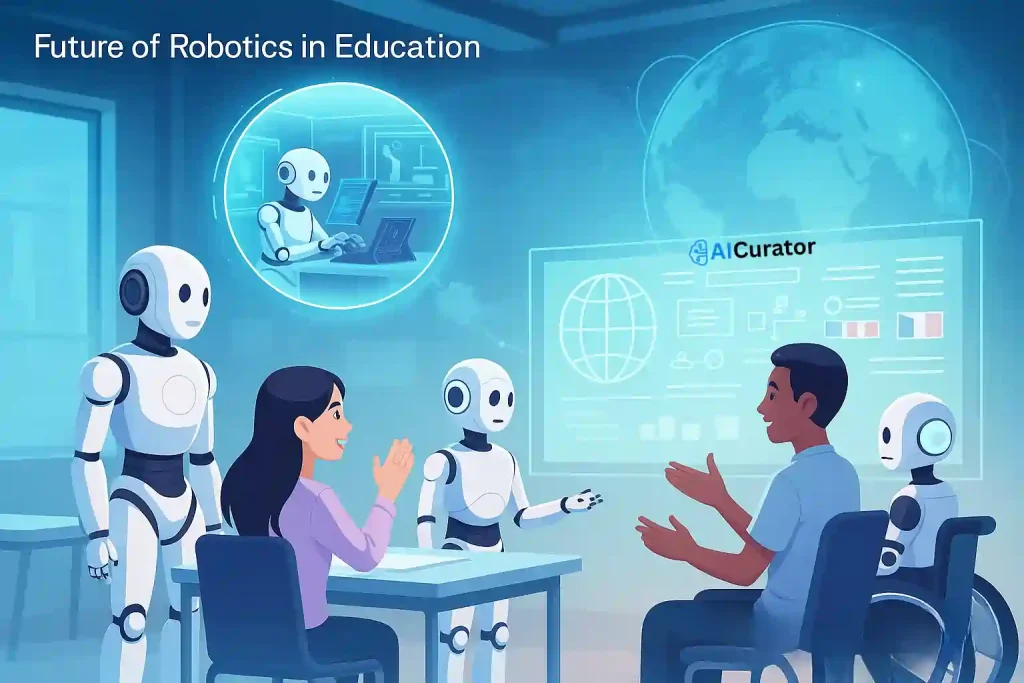
Emerging Technologies
Soon AI-powered learning simulations will enable robots to learn tasks in virtual environments before real-world application. This advancement will accelerate student learning and reduce equipment costs.
Accessibility Improvements
Future robotics platforms will better serve students with diverse learning needs, offering multiple interaction modes and adaptive interfaces.
Global Standardisation
International organisations are developing common frameworks for robotics education, ensuring consistent quality and transferable skills across educational systems.
Conclusion
The integration of robotics into education represents a fundamental shift in how we approach learning and skill development. As technological advancement continues accelerating, educational institutions must adapt their teaching methodologies to remain relevant and effective.
Students who experience robotics-enhanced learning gain practical skills, creative problem-solving abilities, and confidence in technology that will serve them throughout their careers. The future belongs to those who can bridge human creativity with technological capability.







